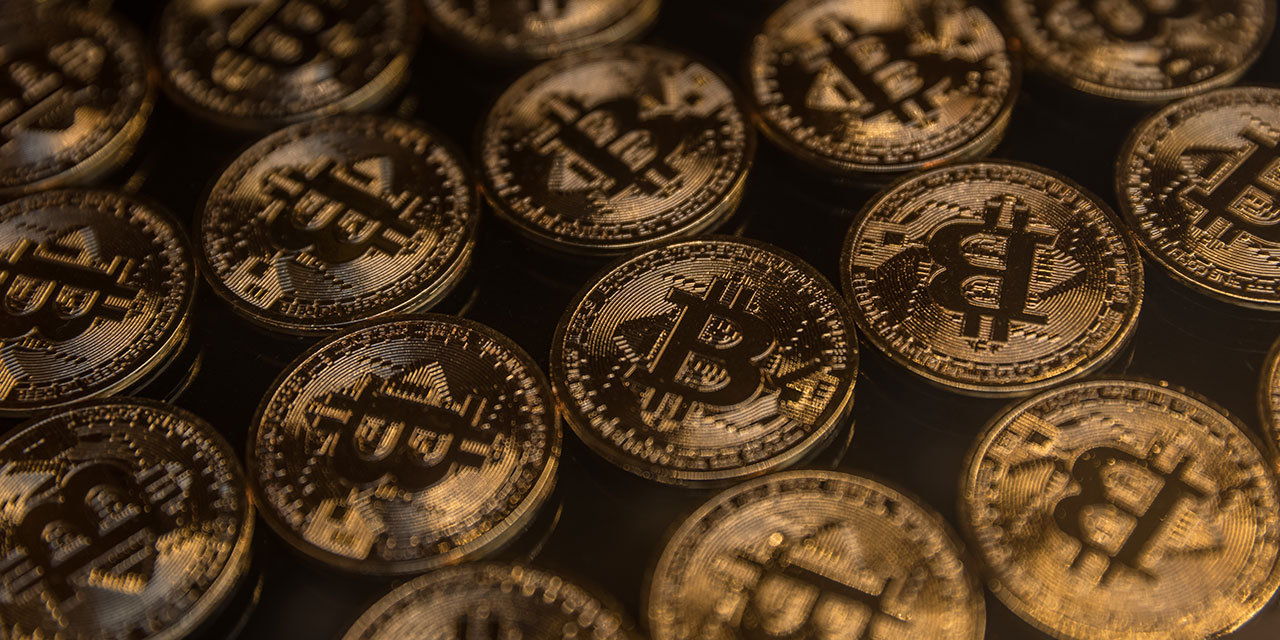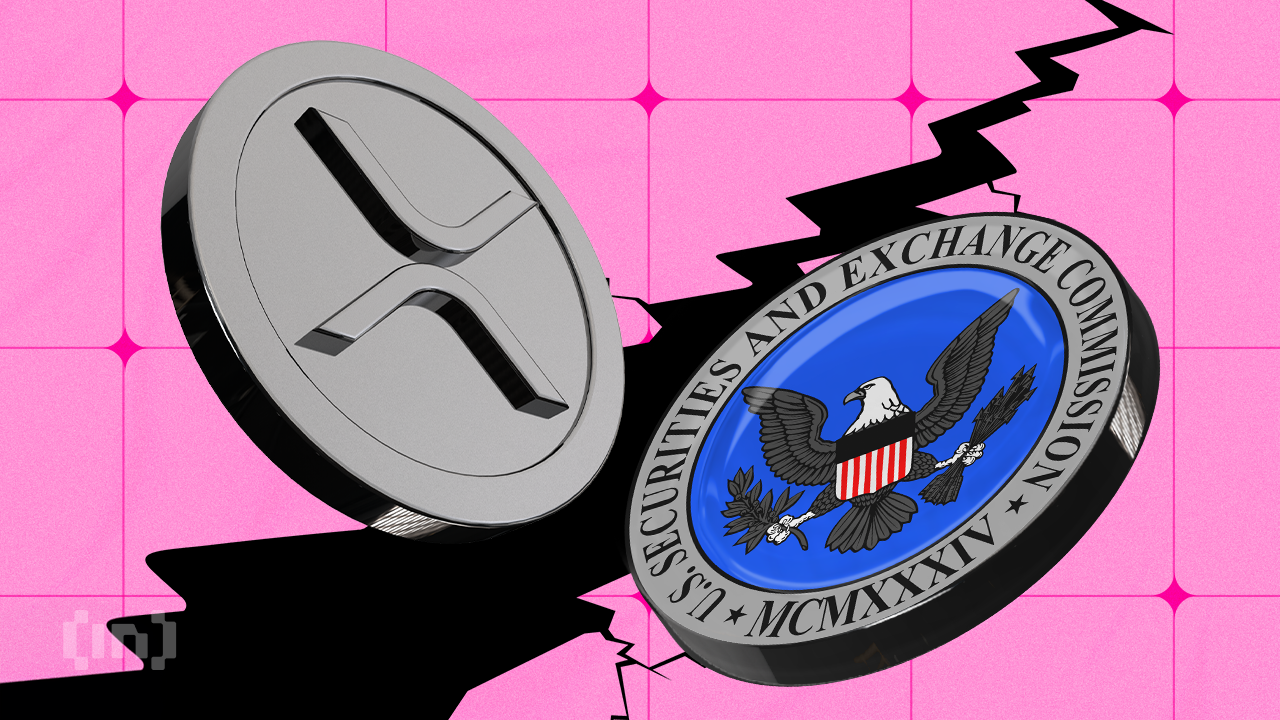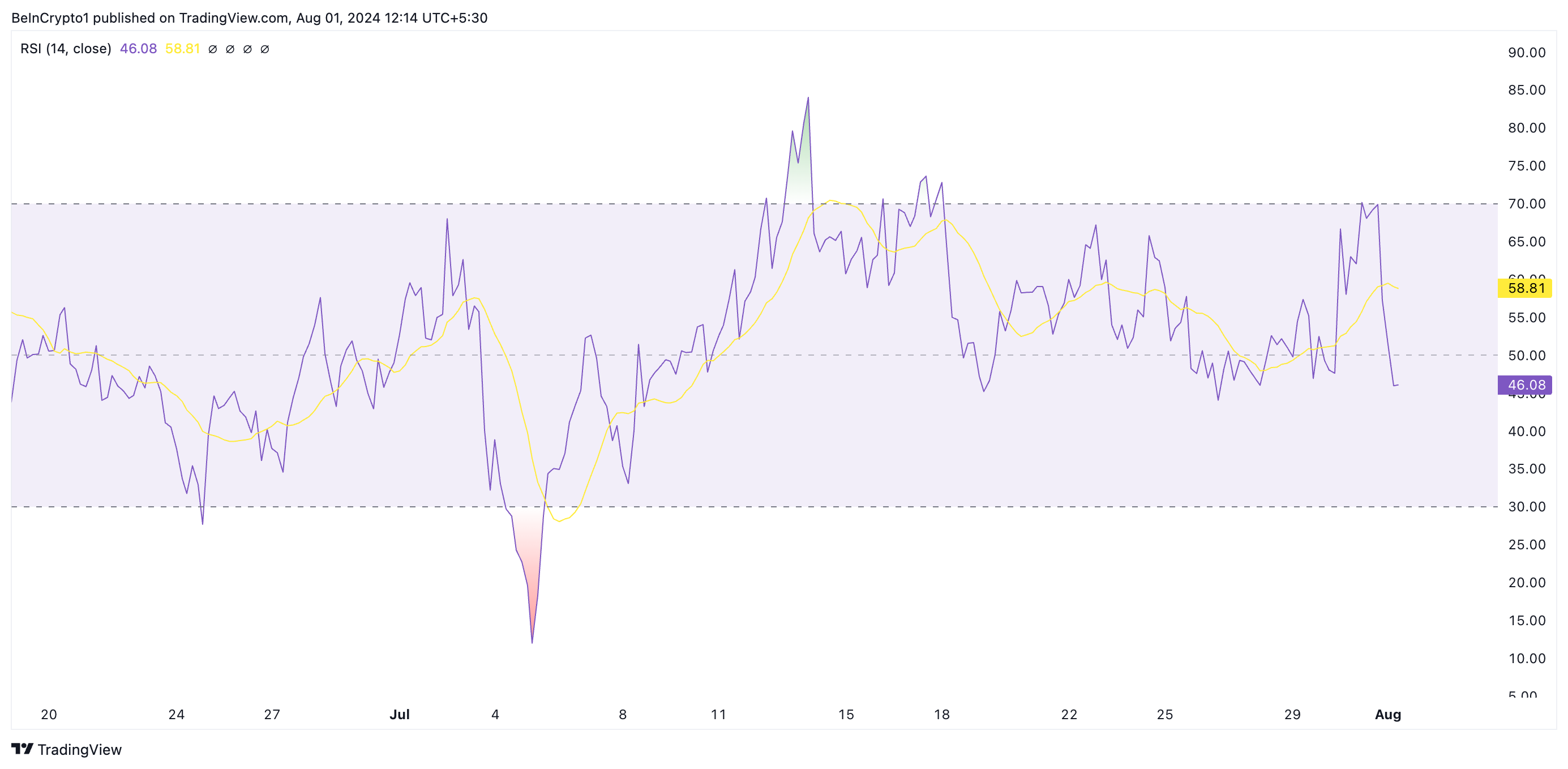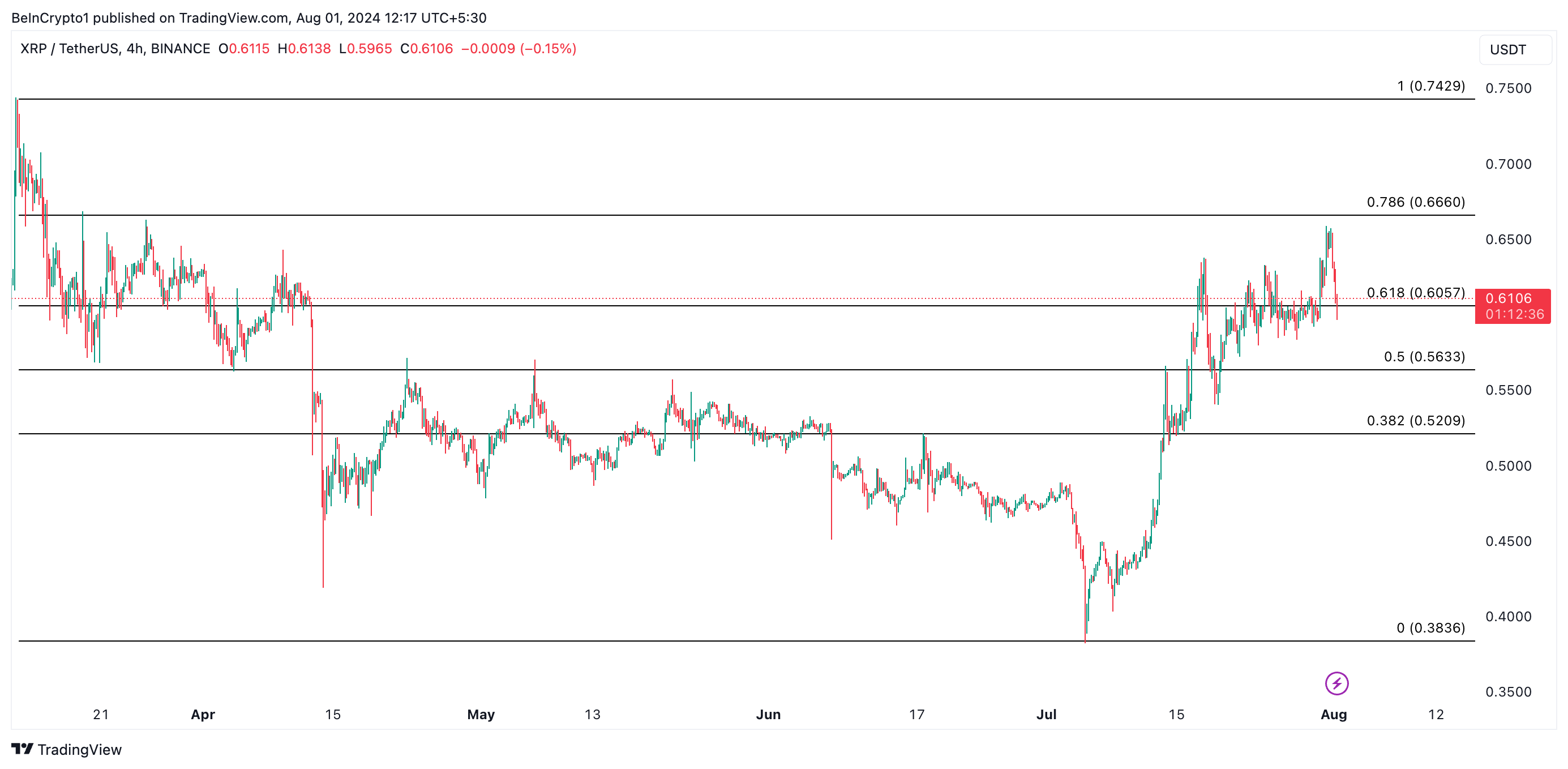Markets
Keep encryption free | City Journal

At the start of this year, it seemed like the cryptocurrency industry would never get a break. In March, a federal judge allowed the Securities and Exchange Commission to proceed with a lawsuit alleging that Coinbase, the nation’s largest cryptocurrency exchange, had been operating as an unregistered securities broker. The next day, Sam Bankman-Fried received a 25-year prison sentence for stealing billions of dollars from customers of FTX, his now-defunct cryptocurrency company. The following month, Changpeng Zhao, the founder and former CEO of Binance, the world’s largest cryptocurrency exchange, was sent to prison for four months after pleading guilty to money laundering charges. Meanwhile, federal prosecutors indicted the founders of Samourai Wallet, a cryptocurrency privacy service, alleging that they (like Zhao) failed to take adequate measures to prevent money laundering.
The SEC’s enforcement action against Coinbase, along with parallel lawsuits against Binance and a third major platform, Kraken, threatens to derail the development of the cryptocurrency industry. If the agency gets its way, exchanges will be forced to comply with securities disclosure, custody, and licensing rules. As they apply to cryptocurrencies, many of these requirements are confusing (buyers of crypto tokens don’t need disclosures about an issuer’s financial condition to make informed decisions, for example). Some are nearly incomprehensible (the practical custody of a crypto token is fundamentally different from the legal custody of a security). Some are downright paradoxical (how are exchanges supposed to convince crypto issuers, some of which are deliberately anonymous, to step forward and cooperate with a hostile SEC?). For the SEC, this disconnect between cryptocurrency markets and New Deal-era regulations is a feature, not a bug. The point is to put the industry in an impossible situation.
But the streak of bad news for the cryptocurrency industry finally ended in May, when the House passed a bill (the Financial Innovation and Technology for the 21st Century Act) that would provide the industry was in dire need of clarity, not to mention legitimacy. Under the bill, an entity could issue a digital currency that complies with a set of disclosure rules tailored to cryptocurrencies. Exchanges could then facilitate trading in that currency subject to relatively light regulation by the Commodity Futures Trading Commission. This provision arguably makes sense because SEC Chairman Gary Gensler, the architect of his agency’s anti-crypto campaign, publicly announced who hates him.
The cryptocurrency industry is attractive to speculators and scammers. Oversight is needed if digital currencies are to become mainstream financial instruments. At the moment, however, regulators are approaching the industry with alarm and animosity. Emboldened by the FTX fiasco, the government has been hard at work scare traditional banks from engaging with cryptocurrency firms. Critics they nicknamed this “Operation Choke Point 2.0,” a nod to how the Obama administration pressured banks to cut ties with politically disfavored players like gun shops and short-term lending institutions.
No one disdains cryptocurrencies more than Massachusetts Senator Elizabeth Warren, who to brag to lead an “anti-crypto army”. She wants to prevent banks and cryptocurrency exchanges from transacting with unidentified counterparties, such as owners of “unhosted” cryptocurrency wallets. (Major cryptocurrency exchanges already adhere to “know your customer” rules for their customers.) To hammer home her hardline position, she try to play like a national security hawk, expressing her concern “for anyone in Congress who is not concerned about the threat posed by Iran and North Korea and their use of cryptocurrency.” This is nonsense. Warren is not afraid of foreigners. She just wants to control Americans.
For cryptocurrency opponents, the natural end goal seems to be the imposition of a centralized, state-controlled digital currency. Private digital currencies can be designed OR fixed up to cloak transactions in anonymity; government digital currency does the opposite, allowing the state to monitor transactions, as well as block them, remove money from accounts, or exclude individuals from the banking system altogether.
Needless to say, Warren supports the creation of a central bank digital currency (CBDC). Surprisingly, some Republicans, including former House Speaker Paul Ryan, have warmed up to the prospect as well as. Most proponents only want a “wholesale” CBDC for interbank transfers. The idea is to create new efficiencies in the banking sector, thereby protecting the dollar’s status as a global reserve currency. But the risks outweigh the potential benefits. Once introduced, a wholesale CBDC, could transmogrify into a “retail” CBDC, then into a mandatory retail CBDC, then into a mandatory retail CBDC that the government monitors and limits. In contrast, the efficiency gains of a wholesale CBDC could to be obtained using one of the existing private stablecoins (digital currencies pegged to the U.S. dollar or some other reference). And in any case, a push to preserve the dollar’s reserve status should begin not with heady proposals for a CBDC, but with a sober effort to address the nation’s growing debt load. If the government devalue the dollara CBDC would not be the right thing.
The virtues of private cryptocurrencies and the dangers of state-run cryptocurrencies are two sides of the same coin (so to speak). Republicans, in their recently released party platform, pledge to end the “crypto crackdown” and oppose the creation of a CBDC. They promise to defend citizens’ “right” to “mine Bitcoin” and “transact free from government surveillance and control.” Led by the likes of Gensler and Warren, Democrats tend to take an extreme position on the other side of the issue. (A cryptocurrency advocacy group from President Joe Biden has a “D” rating.) The split reflects how Republicans increasingly see themselves as countercultural dissidents, outsiders at risk of being de-banked, while Democrats have gradually become the party of institutional elites and authority. But this is a complex and still nascent realignment. Some Democrats they are coming to realize that criticizing cryptocurrencies doesn’t earn him much. Some Republicans persist in seeing the crackdown on cryptocurrencies as a matter of law and order (very like the first (The Trump administration has done so.) Cryptocurrency policy could easily change.
Regardless of what happens in Washington, cryptocurrencies will remain a bulwark against authoritarianism. The Chinese Communist Party has banned digital currencies (except its own), yet its people conduct many billions of dollars in crypto transactions per year. Strengthened by virtual private networks, the Tor browser, PGP encryption, and decentralized exchanges, cryptocurrencies will continue to act as a check on any attempt to build a surveillance state or social credit system.
With a market cap of $2.5 trillion, cryptocurrencies are here to stay. It is in America’s best interest, both as an economic powerhouse and as a country that values freedom, to embrace this reality. We should put fear aside; the SEC’s war on exchanges (and “Operation Choke Point 2.0”) should end. Our legislators should establish sensible ground rules. We should assert preeminence over the global crypto network, to the extent that anyone can.
Photo by Chris McGrath/Getty Images
City newspaper is a publication of the Manhattan Institute for Policy Research (MI), a leading free-market think tank. Interested in supporting the journal? As a 501(c)(3) nonprofit organization, donations to support MI and City Journal are fully tax deductible, as required by law (EIN #13-2912529).
Markets
Bitcoin, Ethereum See Red as Markets Crash on Volatility

Bitcoin AND Etherealalong with the rest of the top 10 cryptocurrencies by market cap, appear to be in hibernation on Thursday morning.
At the time of writing, the Bitcoin Price is still below $65,000 and 2.2% lower than it was this time yesterday, according to CoinGecko data. Things are worse for the Ethereum Pricewhich is 3.7% lower than 24 hours ago at $3,185.22. The drop in ETH’s price is identical to that of Lido Staked Ethereum (stETH), a liquid staking token for Ethereum.
In recent days, falling prices have led to the liquidation of derivative contracts worth $225 million, according to Coin glassAnd about half of that, about $100 million, was liquidated in the last 12 hours.
When a trader is liquidated, it means that their position in the market has been forcibly closed by an exchange or brokerage due to a margin call or insufficient collateral. Margin is especially important when it comes to leveraged positions, which allow traders to control a multiple of their deposit, such as opening a $10,000 position with only $1,000 in their account.
Now that Bitcoin has been in the red for three days in a row, there is a chance that the world’s oldest and largest cryptocurrency could sink even further, BRN analyst Valentin Fournier said in a note shared with Decrypt.
“Bitcoin has closed in the red for three days in a row, with one-way trading showing limited resistance from bulls. Ethereum had a slightly positive Monday with strong resistance from bears who have won the last two days,” he wrote. “This momentum could take BTC to the $62,500 resistance or even the $58,000 territories.”
Looking ahead, Fournier said BRN’s strategy will be to “reduce exposure to Bitcoin and Ethereum and find a better entry point after the dip.”
This is despite Federal Reserve Chairman Jerome Powell’s comments yesterday on interest rates being widely regarded as accommodating and indicative of FOMC rate cuts in September.
Singapore-based cryptocurrency trading firm QCP Capital said the rally in stocks, which sent the S&P 500 up 1.6% from Wednesday’s close, was not felt in cryptocurrency markets.
“Cryptocurrencies have seen a broad sell-off overnight and into this morning,” the firm wrote in a trading note. “The market remains poised as traders pay close attention to daily ETH ETF outflows and further supply pressure from Mt Gox and the US government.”
Meanwhile, the other top-ranking coins are showing mixed performance.
Solana (SOL) is down 7.2% since yesterday to $169.13. Things are even worse for its most popular meme coins. In the past 24 hours, the most popular meme coins Dogwifhat (WIF) are down 12% and BONK (BONK) is down 9%, according to CoinGecko data.
Their dog-themed competitor, Ethereum OG Dogecoin (DOGE), the only meme coin in Coingecko’s top 10, is down nearly 4% since yesterday and is currently trading at $0.1205.
XRP (XRP) dropped to $0.608, which is 7% lower than it was at this time yesterday.
Binance’s BNB Coin (BNB) has kept pace with BTC and is currently trading at $571, down 2.4% from yesterday. Toncoin (TON), the native token of The Open Network, is down just 0.4% over the past day.
This leaves the stablecoins USDC (USDC) and Tether (USDT), both of which are stable as they maintain their 1:1 ratio with the US dollar.
Markets
XRP Market Activity Drops During Ripple-SEC Talks: Price Steady

The Securities and Exchange Commission (SEC) will hold another closed-door meeting with Ripple on Thursday, as the market hopes for a possible resolution to the legal battle between the two entities.
However, the cryptocurrency market remains relatively bearish, with the price and trading volume of XRP down in the last 24 hours.
Ripple holders take no risk
At press time, XRP is trading at $0.60. The altcoin’s price has dropped 6% over the past 24 hours. During that time, trading volume was $27 million, down 27%.
The SEC met before with the digital payment company on July 25. While the outcome of that meeting remains unknown, the Sunshine Act Notice for Thursday’s meeting includes one additional topic of discussion from the July 25 closed meeting: the instituting and resolving injunctive relief. That has market participants speculating whether a settlement is imminent.
In an exclusive interview with BeinCrypto, Ryan Lee, Lead Analyst at Bitget Research, noted that:
“This meeting will discuss possible resolution options for the Ripple Lawsuit. The founder of Ripple Labs said that a legal settlement could be announced soon. If an official settlement plan is released, it could positively impact XRP’s price movement.”
However, an assessment of XRP’s price movements on a 4-hour chart shows a spike in bearish bias as the market awaits the outcome of this crucial meeting. Its Moving Average Convergence/Divergence (MACD) indicator readings show that its MACD line (blue) has crossed below its signal line (orange).
XRP 4 Hours Analysis. Source: Trading View
Traders use this indicator to gauge price trends, momentum, and potential buying and selling opportunities in the market. When an asset’s MACD is set this way, it is a bearish signal that suggests selling activity is outweighing buying momentum.
Additionally, the altcoin relative strength index (RSI), at 46.08, is currently below its neutral 50 line and in a downtrend. This indicator measures overbought and oversold market conditions for an asset.
To know more: How to Buy XRP and Everything You Need to Know
 XRP 4 Hours Analysis. Source: Trading View
XRP 4 Hours Analysis. Source: Trading View
At 43.83 at the time of writing, XRP’s RSI suggests a growing preference among the market participants for tokin distribution.
XRP Price Prediction: Derivatives Traders Exit Market
The XRP derivatives market has also seen a decline in trading activity over the past 24 hours. According to Coinglass, derivatives trading volume has plummeted 18% and open interest has dropped 10% during that period.
Open interest refers to the total number of outstanding derivative contracts, such as options or futurethat have not yet been resolved. When it drops, traders close their positions without opening new ones. This is a bearish signal that reflects a lack of confidence in any potential positive price movement.
According to Lee, the outcome of the meeting with the SEC “would have a significant impact on the price movement of the token.” If the outcome is favorable, the price of the token could rise towards $0.75 in August.
To know more: Ripple (XRP) Price Prediction 2024/2025/2030
 XRP 4 Hours Analysis. Source: Trading View
XRP 4 Hours Analysis. Source: Trading View
On the other hand, if no favorable resolutions are reached, the price could plummet to $0.50.
Disclaimer
In line with the Trust Project guidelines, this price analysis article is for informational purposes only and should not be considered financial or investment advice. BeInCrypto strives to provide accurate and unbiased reporting, but market conditions are subject to change without notice. Always conduct your own research and consult a professional before making any financial decisions. Please note that our Terms and conditions, Privacy PolicyAND Disclaimers They have been updated.
Markets
Bitcoin’s Dominance Hits Three-Year High, But Analysts Say Altcoins Are Ready to Rebound

Bitcoin is now the dominant force in the cryptocurrency market, surpassing 53% of the total cryptocurrency market, a stronger share than it has been in the past three years.
Bitcoin’s market cap now stands at $1.27 trillion, second according to CoinGecko data. In contrast, the total cryptocurrency market cap is $2.43 trillion, with Ethereum occupying 15.9% of the market, worth $389 billion.
Bitcoin’s rise to dominance this year is unusual, as altcoins typically do better than Bitcoin in a bull market. While meme coins made a strong comeback during Bitcoin’s rally to all-time highs earlier this year, the so-called “wealth effect” It has not been appreciated as much by mid-range coins, such as Ethereum and Cardano.
“ETF flows fundamentally alter market dynamics,” he wrote Meltem Demirors, former chief strategy officer at CoinShares, tweeted Wednesday: “BTC gains no longer translate to alts and the longer tail of crypto.”
Bitcoin’s takeover has continued even as the market cap of Tether (USDT) continues to grow, the world’s largest stablecoin and the third-largest cryptocurrency after BTC and ETH. Stablecoins are backed by fiat currencies and are excluded from some measures of Bitcoin dominance due to fundamentally different value models.
The surge continued to pace even after the launch of Ethereum spot ETFs last week, which ironically culminated in a news sell-off event, and net outflows from new investment products since they were launched. This went against the predictions of K33 Search so far, which predicted that ETFs would catalyze ETH’s growth over the next five months.
Despite the poorer performance of the alts, there is reason to believe that they are ready to bounce back very soon.
CryptoQuant CEO Ki Young Ju said Tuesday that whales are “preparing for the next altcoin rally,” as limit buy orders for assets other than BTC and ETH are on the rise.
The executive shared a chart showing how the “cumulative difference between purchase volume and sales volume” has increased in recent months.
“The indicator measures the difference between buy and sell orders over a year,” CryptoQuant told Decrypt. A buy/sell order is a pre-set request to buy or sell a cryptocurrency if it hits a certain price level, which creates resistance and support levels.
“If the trend is up, it means that more people are placing buy orders, showing strong interest in buying,” CryptoQuant said.
By Ryan-Ozawa.
Markets
XRP and SOL Retrace as BTC Price Drops to 2-Week Lows (Market Watch)

After Monday’s crash, in which BTC fell by several thousand dollars, the scenario has repeated itself once again in the last 12 hours, with the asset falling to a 2-week low of $63,300.
Alt coins followed suit, with most of the market in the red today. SOL and XRP lead the way from the higher cap alts.
BTC Drops To $63.3K
After a violent Thursday last week, when BTC crashed to $63,400, the asset went on the offensive over the weekend and surged above $69,000 on Saturday, as the community prepared for Donald Trump’s appearance at the 2024 Bitcoin Conference in Nashville.
His speech was followed by more volatility before the cryptocurrency settled around $67,500 on Sunday. Monday started off rather optimistically for the bulls as bitcoin hit a 7-week high of $70,000.
However, he failed to maintain his run and conquer that level decisively. On the contrary, he was rejected bad and dropped to $66,400 by the end of Monday. Tuesday and Wednesday were less eventful as BTC remained still around $66,500.
The last 12 hours or so have brought another crash. Bears have pushed the leading digital asset down hard, which has fallen to a 2-week low of $63,300 (on Bitstamp), leaving over $200 million in liquidations.
Despite the current rebound to $64,500, BTC’s market cap has fallen to $1.270 trillion, but its dominance over alts is recovering and has reached 52.6%.
Bitcoin/Price/Chart 01.08.2024. Source: TradingView
The Alts are back in red
Ripple’s native token has been at the forefront of the market challenge in recent days as pumped up to a multi-month high of over $0.66. However, its run was also interrupted and XPR fell by more than 6% in the last day to $0.6.
The other big loser among the larger-cap alternatives is SOL, which has lost 8% of its value and is now struggling to get below $170.
The rest of this altcoin cohort is also in the red, with ETH, DOGE, BNB, AVAX, ADA, SHIB, and LINK all seeing drops between 2 and 5%.
The total cryptocurrency market cap lost another $70 billion overnight, falling below $2.4 trillion today on CG.
Cryptocurrency Market Overview. Source: QuantifyCrypto SPECIAL OFFER (sponsored)
Binance $600 Free (CryptoPotato Exclusive): Use this link to register a new account and receive an exclusive $600 welcome offer on Binance (full details).
LIMITED OFFER 2024 on BYDFi Exchange: Up to $2,888 Welcome Reward, use this link to register and open a 100 USDT-M position for free!
Disclaimer: The information found on CryptoPotato is that of the authors cited. It does not represent CryptoPotato’s views on the advisability of buying, selling, or holding any investment. We recommend that you conduct your own research before making any investment decisions. Use the information provided at your own risk. See Disclaimer for more information.
Cryptocurrency Charts by TradingView.
-

 News1 year ago
News1 year agoBitcoin soars above $63,000 as money flows into new US investment products
-

 DeFi1 year ago
DeFi1 year agoEthena downplays danger of letting traders use USDe to back risky bets – DL News
-

 News1 year ago
News1 year agoFRA Strengthens Cryptocurrency Practice with New Director Thomas Hyun
-

 DeFi1 year ago
DeFi1 year agoZodialtd.com to revolutionize derivatives trading with WEB3 technology
-

 Markets1 year ago
Markets1 year agoBitcoin Fails to Recover from Dovish FOMC Meeting: Why?
-

 DeFi1 year ago
DeFi1 year ago👀 Lido prepares its response to the recovery boom
-

 Markets1 year ago
Markets1 year agoWhale Investments in Bitcoin Reached $100 Billion in 2024, Fueling Crazy Investor Optimism ⋆ ZyCrypto
-

 Markets1 year ago
Markets1 year agoWhy Bitcoin’s price of $100,000 could be closer than ever ⋆ ZyCrypto
-

 DeFi1 year ago
DeFi1 year agoPancakeSwap integrates Zyfi for transparent, gas-free DeFi
-

 Markets1 year ago
Markets1 year agoWhales are targeting these altcoins to make major gains during the bull market 🐋💸
-

 News1 year ago
News1 year agoHow to make $1 million with crypto in just 1 year 💸📈
-

 DeFi1 year ago
DeFi1 year ago🏴☠️ Pump.Fun operated by Insider Exploit





